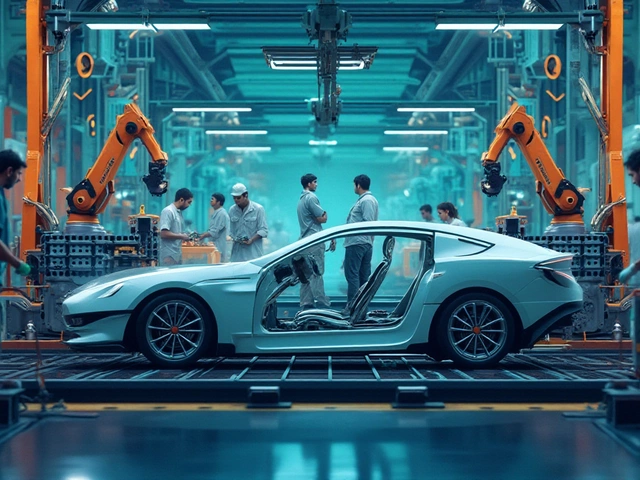Pharmaceutical Manufacturing: What You Need to Know
If you’re curious about how the pills and syrups you use every day are made, you’re in the right place. Pharmaceutical manufacturing isn’t just about mixing chemicals; it’s a tightly controlled process that blends science, safety, and a lot of paperwork. In this guide we’ll break down the core steps, the biggest challenges, and the trends that are reshaping the industry.
Why Quality Matters in Pharma Production
First thing’s first – quality can’t be an after‑thought. A small mistake in a batch can affect thousands of patients, so companies follow Good Manufacturing Practices (GMP) to keep everything in check. GMP covers everything from the cleanliness of the plant to the training of each worker. Think of it like a recipe: you need precise measurements, the right temperature, and a clean kitchen to get a perfect dish.
During production, raw materials are tested before they even enter the line. This step weeds out contaminated or sub‑standard inputs. Once the ingredients are in the mixer, sensors monitor temperature, pH, and pressure in real time. If anything drifts out of range, the system can automatically pause or adjust, preventing a bad batch before it happens.
After the product is formed, it goes through a series of checks – visual inspection, potency testing, and stability studies. Stability studies are like a “shelf‑life test” where the drug is stored under different conditions to see how long it stays effective. Only after passing all these hurdles does the batch get a release certificate and can be shipped.
Tech and Sustainability Driving the Future
Technology is turning the pharma floor into a high‑tech hub. Automation reduces human error, while advanced analytics spot trends that a human might miss. For example, AI can predict when a piece of equipment might fail, allowing teams to fix it before it causes downtime. This approach, called predictive maintenance, saves money and keeps production running smoothly.
Another big shift is toward greener manufacturing. Traditional drug making can waste a lot of water and generate hazardous waste. New processes use continuous manufacturing, where the product flows through the plant without stopping for batch changes. This method cuts waste, uses less energy, and often produces a more consistent product.
Biopharma is also shaking things up with single‑use bioreactors. Instead of cleaning a huge stainless‑steel tank after each batch, companies use a disposable liner that’s tossed away after use. It’s cheaper, faster, and reduces the risk of cross‑contamination.
Regulators are encouraging these changes. Agencies like the US FDA and European EMA now offer faster review pathways for manufacturers who adopt innovative, high‑quality processes. So, if a company invests in better tech and greener methods, they can bring drugs to market quicker.
Bottom line: pharmaceutical manufacturing is a mix of strict quality control, cutting‑edge tech, and a growing focus on sustainability. Whether you’re a student, a health‑care professional, or just a curious consumer, understanding these basics helps you see why the medicines you rely on are safe and effective.
Want to learn more? Check out our article on Dr. Reddy’s global drug factories for a real‑world example of how a big pharma player manages quality and scale across continents.
India: The Rising Pharma King
India has become a formidable force in the global pharmaceutical landscape, earning the title of the 'Pharmacy of the World.' The country is renowned for its large-scale production of generic medicines and cost-effective manufacturing capabilities. India's pharma industry not only caters to domestic needs but also serves a significant portion of the world's medical demands. With a unique blend of innovation and accessibility, India stands as a crucial player in healthcare.
View More




